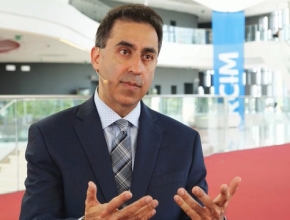References
Pareek AK, Messerli FH, Chandurkar NB, et al. Efficacy of Low-Dose Chlorthalidone and Hydrochlorothiazide as Assessed by 24-h Ambulatory Blood Pressure Monitoring. J Am Coll Cardiol. 2016 Feb 2;67(4):379-89. doi: 10.1016/j.jacc.2015.10.083. PubMed PMID: 26821625.Roman Jaeschke: Good afternoon. It is my great pleasure to introduce to you Professor Messerli, who is the person who led the treatment of hypertension over the last few decades. On the occasion of his presentation at the McMaster International Review Course in Internal Medicine (mircim.eu), I would like to ask you to reflect on the last few decades of hypertensive treatment. Where did we start, where are we now?
Franz H. Messerli: That is actually a very loaded question and not easy to answer. If you go back to the guidelines, you have to consider that for years and decades the dictum was thiazide diuretics. First it was thiazide diuretics, and then it was low-dose thiazide diuretics. To the practising physician in the United States this very simply means hydrochlorothiazide. So a few years back I decided to look at the data – what data do we have for hydrochlorothiazide? Surprise, surprise: we have no data for hydrochlorothiazide showing that in a low dose of 12.5 to 25 mg it reduces heart attacks, stroke, or death. So what these guidelines had been telling practicing physicians was all based on either chlorthalidone (INN chlortalidone) or indapamide, yet these two drugs are not used in the US – [they are] only about 1% of diuretics used – so clearly what was taught by the guidelines in the past was deceptive.
Now we are realizing finally that we should go with the evidence and we should use chlorthalidone, we should use indapamide, and not hydrochlorothiazide. Unfortunately, those fixed combinations – that is ß-blockers, angiotensin-converting enzyme (ACE) inhibitors, angiotensin receptor blockers (ARBs) – are fixed together with hydrochlorothiazide, because pharmaceutical companies were exactly under the same influence. They had the idea hydrochlorothiazide is the way to go. Now we are learning it is not necessarily so. We should do better. I think by and large chlorthalidone or indapamide have a renaissance.
The other issue to be considered is that we were so convinced that ACE inhibitors and ARBs are the way to go that we almost forgot that calcium blockers (CCBs) are as efficacious – if not more efficacious – than ACE inhibitors and ARBs, and we know now that amlodipine and to some extent nifedipine are very well-documented drugs that have excellent outcome data and have been shown to reduce morbidity, mortality, heart attack, stroke, and death, in some cases even better than the ACE inhibitors and ARBs.
In a nutshell, what we do know is that chlorthalidone or indapamide as diuretics, amlodipine and nifedipine as CCBs, and the ARBs and ACE inhibitors are all suitable for first-time therapy. Clearly we have learned that ß-blockers are no longer in that position.
RJ: A loaded question but an incredibly informative answer. The notion that hydrochlorothiazide data are almost nonexistent [but data for] chlorthalidone and indapamide are available is revolutionary for most of the primary practitioners, including myself. The dose of chlorthalidone would be similar to hydrochlorothiazide?
FM: Actually no, it is about half. We just recently published a paper in the Journal of the American College of Cardiology (JACC) showing that 6.25 [mg] is a decent antihypertensive dose of chlorthalidone. So you can use a minimal dose. In the US, we actually have the problem that the lowest dose available is 25 mg, so if you break the tablet it usually crumbles, but I tell my patients, “Just take a crumb.”
RJ: We just identified the main presentation of our next [McMaster Perspective episode]. This would be the discussion which you just conducted on chlorthalidone versus hydrochlorothiazide. It is quite incredible.
This interview was recorded at the 2nd McMaster International Review Course in Internal Medicine in Kraków, Poland. To learn more, visit www.mircim.eu.
 English
English
 Español
Español
 українська
українська







